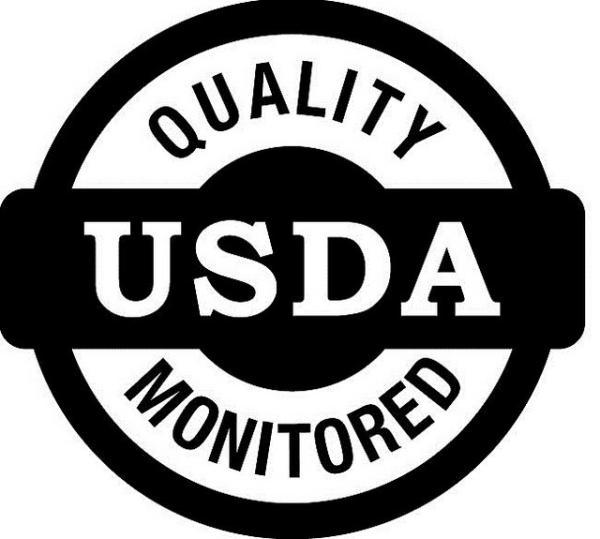The USDA released two reports that deserve a little recognition beyond the community providing and collecting the data. The first reports on pesticides and the second on antibiotics in our food supply.
Pesticides
The USDA is reporting on a voluntary sampling of foods representing geographically about 50% of our population and major agricultural areas. The foods include imports and those labeled as organic. Samples were collected at points close to consumer purchase, like warehouse distribution centers and handled as recommended, washed gently in water for about 20 seconds. The 521 pesticides and 21 environmental contaminants [1] to be identified and the commodities included are determined by the EPA and take into account “types and amounts of food consumed by infants and children.”
In 2017 they looked at 10,541 samples of food, 83% fresh and processed fruits and vegetables, 7% milk, 7% bottled water and 3% honey. Domestic samples predominated at 72.4%, 26% were imported, and the rest were mixed or of unknown origin. Laboratory methods were “geared to detect the lowest possible levels of pesticide residues, even when those levels are well below the tolerances established by EPA.”
- “In 2017, over 99 percent of the samples tested had residues well below the tolerances established by the EPA with 53 percent having no detectable pesticide residue.”
- Residues exceeding tolerance were found in 0.59% of sample reasonably well distributed between domestic and imported sources. [2]
- Residues with no established tolerance were found in 3.3% of samples again well distributed between domestic and imported sources.

“The data reported by PDP corroborate that residues found in agricultural products sampled are at levels that do not pose risk to consumers’ health and are safe according to EPA and FDA.”
For those of you with an interest in a specific food, here is a listing of the foods and the percentage found to be free of all pesticide residues.
Antibiotics
In 2016 the use of antibiotics that were medically important to humans was restricted in food production. Antibiotics could only be used for therapeutic indications, to treat disease or at the direction of a veterinarian. No antibiotic use was allowed for the promotion of growth.
- The domestic sale and distribution of antibiotics in food-producing animals decreased by 33% from 2016 to 2017
- Sale of Tetracycline which is the most significant antibiotic by volume, used in a variety of feed animals dropped by 40%
- There were overall decreases in the use of antibiotics in cattle, swine, chickens, turkeys and other feed animals.
- Several antibiotics showed small increases in use, but this may reflect the pressure of disease-specific to 2017.
Not all the news was rosy as depicted in this table.

Overall therapeutic use increased as those antibiotics designated for both production and therapeutic indications moved into the therapeutic only category. So, work remains to be done. The most sustainable way forward is by reducing the disease burden on our feed animals, and that will require us to change the environment in which they are raised and providing other preventative measures, like vaccinations, a topic I have mentioned in the past.
[1]Environmental contaminants include pesticides previously banned but where their residues persist in the environment, e.g., soil.
[2] While this is a voluntary program, these samples were reported to the FDA “as Presumptive Tolerance Violations.”
Source: USDA Annual Pesticide Data Program 2017 and USDA Summary Report On Antimicrobials Sold or Distributed for Use in Food-Producing Animals




